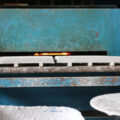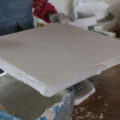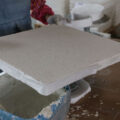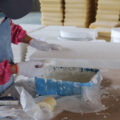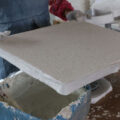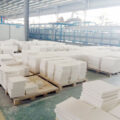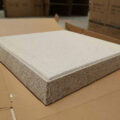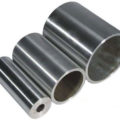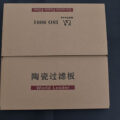Since the molten aluminum filter was first used in 1978, molten metal filtration technology has developed rapidly. The aluminum foundry filters manufacturing process uses polyurethane foam as a carrier and is immersed in a suspending agent composed of ceramic powder, binder, sintering agent and paint to squeeze out the excess paint. The paint is evenly coated on the carrier skeleton to form a green body, and then the green body is dried and baked at a high temperature.
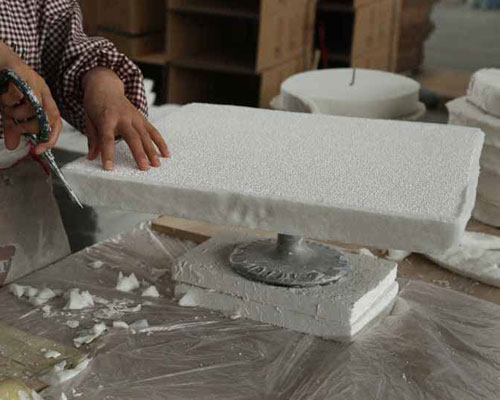
Asian Foundry Filters Manufacturing Process
The main raw material of the porous filter material is high-temperature alumina. It does not react with molten aluminum, does not dehydrate during the roasting process, has a very small shrinkage rate, and has relatively stable physical and chemical properties.
The slurry used is mainly composed of water-suspended colloids of various components. When making embryos, the slurry can firmly adhere to the foamed plastic screen. When grouting, it should not be too thick or too thin. If it is too thick, the mud will not easily fill up the foam on the sieve. If it is too thin, it is easy to settle on the plastic net and form an uneven slurry.
Therefore, controlling proper moisture is the key to pulping. In addition, the adhesiveness of the slurry should be moderate. Tests have found that adding too much low-temperature binder will cause excessive agglomeration of the slurry. The excessive squeezing of the slurry will make it difficult to recover the foam mesh. Adding too little adhesive will result in too low bonding performance of the slurry, and the slurry will not be tightly attached to the foamed plastic net. After dismantling, there is no power and it is easy to dismantle. Even if it has a certain strength when hung, because the slurry is too thin, the net structure is very brittle, and the overall strength is poor.
The metal mesh is used to make the oven board, and the oven board is used as the support board of the foam block drying body after the slurry is placed. Dry at room temperature first, then in hot air. Firing is a key step in the porcelain-making process. Mastering the firing changes in the high-temperature firing process and formulating the correct firing system are the keys to firing high-quality products.



